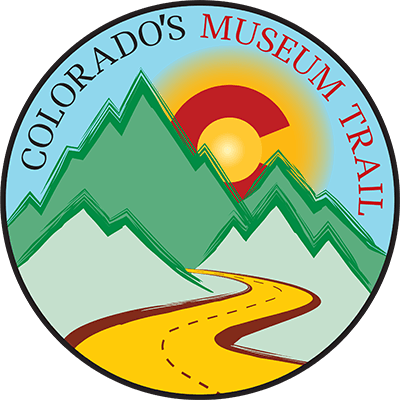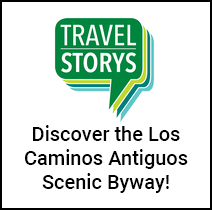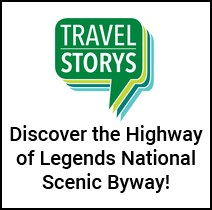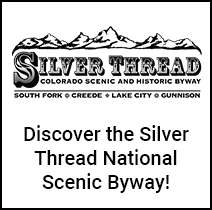Introducing the Valley
This introductory 2-3 day itinerary features ten sites that capture the essence of the San Luis Valley’s heritage and natural beauty. Together these sites reveal the area’s striking natural features, its rich layers of history, and its unique Hispano cultural arts traditions. A journey between these sites will reveal the unique spirit and rural charm of the San Luis Valley.
Travel mileage: 272 miles. Travel time: The Rio Grande Scenic Railroad and the Cumbres Toltec Scenic Railroad rides are usually an all-day excursion.
1 – Blanca: Great Sand Dunes National Park and Preserve – America’s newest National Park showcases the continuous work of wind, water and time. Sand captured by the unique topography of the massive and nearly vertical Sangre de Cristo Mountains creates the tallest inland dunes on the continent. Medano Creek flows at the base of the dunes, providing a place where visitors enjoy sand, water, and sun in a spectacular mountain setting.
2 & 3 – Fort Garland and San Luis: Fort Garland Museum – Built in 1858 during the height of the U.S.’ westward expansion, this historic adobe fort accommodated a string of notables. The legendary Kit Carson served as commandant after the Civil War. Military history, including the story of the Buffalo Soldiers are featured at the Fort.
Sangre de Cristo Heritage Center - Founded in 1851 by Hispano settlers, San Luis is the oldest continuously occupied settlement in Colorado. Just off of Main Street in the town of San Luis is the Sangre de Cristo Heritage Center highlighting the Hispano cultural arts traditions of the Valley, including contemporary murals, historic religious items, embroidery and stories of the Hispano pioneers who settled in the area.
Stations of the Cross – High atop a mesa overlooking the historic town of San Luis, Colorado is the Shrine of the Stations of the Cross, a dramatic illustration of Christianity’s importance to the Valley’s Hispano communities. Here, a path leads visitors past a series of outdoor sculptures depicting the crucifixion of Jesus.
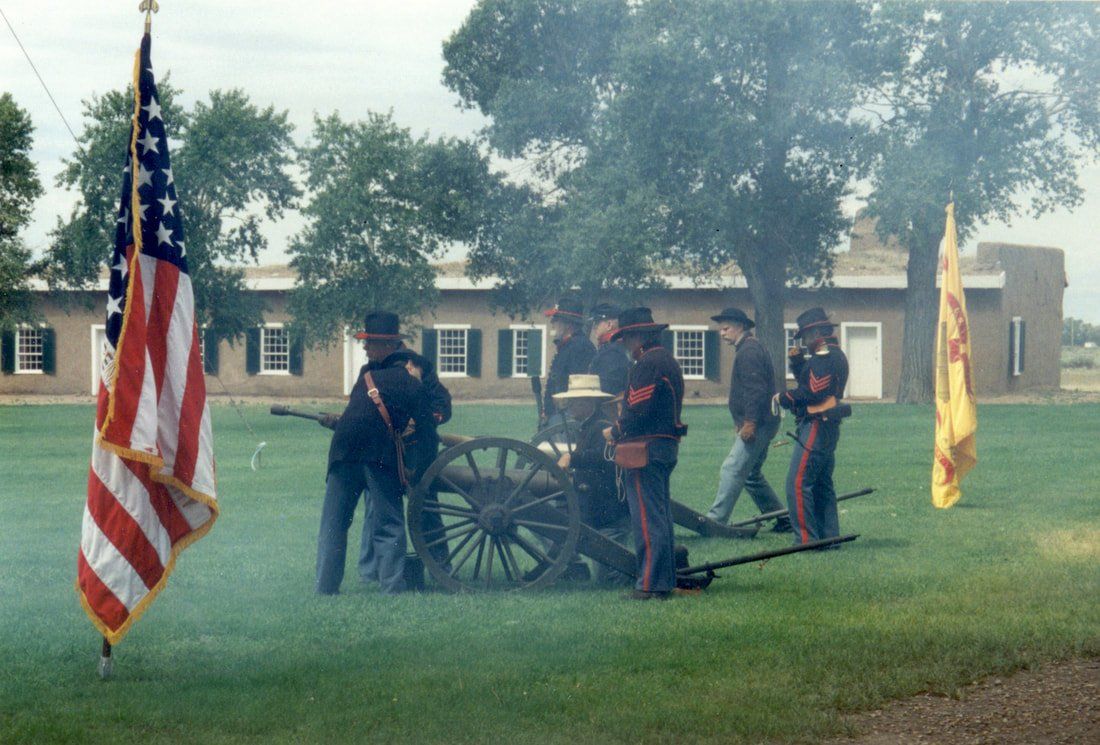
Fort Garland Reenactors

4 & 5 – Antonito and Sanford: Cumbres & Toltec Scenic Railroad – Departing out of the town of Antonito originally constructed in 1880 as a part of the Rio Grande San Juan Extension, the Cumbres and Toltec Scenic Railroad is one of the finest examples of a narrow-gauge railroad still in operation today. This 64-mile steam railroad, connecting Antonito, CO, with Chama, NM, features North America’s steepest RR grade set among spectacular scenery. The Society of International Railway Travelers named the C&TS, “cats”, one of the twenty best railway experiences in the world. Passenger trains operate from Memorial Day Weekend to mid-October departing Antonito daily. Call 1-888-CUMBRES (1-888-286-2737) for ticket reservations and fares.
The Sanford Museum works to preserve the history and heritage of the Hispano, Mormon and European settlers in the area of Sanford, Las Sauces and the Zebulon Pike Stockade.
The Conejos County Museum celebrates the beginnings of Colorado through its communities of Antonito, Conejos, Sanford, Manassa, and La Jara; from settlers and explorers along the pathways of the Old Spanish Trail and the Los Caminos Antiguos Scenic Byway. The County is the location for Colorado’s oldest parish – Our Lady of Guadalupe Church, Pike’s Stockade, the jumping off point for riding the Cumbres & Toltec Railroad and - La Sociedad Proteccion Mutua de Trabajadores Unidos Concilio Superior (in Antonito) a mutual aid society established in 1900 to protect Hispano workers.
6 – Alamosa: Rio Grande Scenic Railroad – This historic railroad opened the San Luis Valley to commerce. As tracks were laid, towns were built, torn down and relocated at the new end of the rails. Today the railroad offers passenger excursion trains from Alamosa east over scenic La Veta Pass and southwest to Antonito. The unique connection with the C&TS Railroad in Antonito is the only place in North America where standard gauge passenger rail meets narrow gauge passenger rail. May-October – Trains depart Alamosa, Fort Garland, and La Veta daily. Call 1 (877) 7CO-RAIL (877-726-7245) for schedules and fares.
Oral History: Pages 1-3 of this PDF - "History of the Alamosa Town Site" discusses the beginnings of Alamosa through the Denver & Rio Grande Railroad. This written oral history is part of a collection with History Colorado "The CWA Pioneer Interviews are the result of a project led by the Civil Works Administration in Colorado in 1933-34.
While in Alamosa makes sure to visit the San Luis Valley-Alamosa Museum. The museum offers a trip through history of the San Luis Valley and Alamosa. It begins with the Ute Indians, French Canadian trappers, Colonial Spain, Mexicans, Dutch, Swedes, Germans and Japanese. The travels and times of de Anza, Zebulon Pike, Kit Carson and Tom Tobin can be found here. The building's mural represents many historical events and significant areas of the San Luis Valley.
7 – Monte Vista: Monte Vista National Wildlife Refuge – In the heart of this arid mountain valley, lush wetlands provide year-round habitat for birds and other wildlife. In March and September, twenty thousand migrating Sandhill cranes use the refuge as a major stopping point. This migration is one of the Valley’s greatest spectacles. The refuge is open during daylight hours, 7 days a week. During the annual Monte Vista Crane Festival in March there are bus tours from town to the refuge.
The Monte Vista Historical Society Museum - housed in the town's original library this wonderful little stone building houses a vast collection of photographs depicting the life of the settlers, farming, ranching, irrigation and establishment of this historic town.
8 & 9 - Del Norte and Saguache: Rio Grande County Museum – Located in Del Norte, the Rio Grande County Museum provides an overview of the Valley’s natural and cultural heritage. Exhibits reveal stories about the Valley’s residents, including Native Americans, Hispanic settlers, trappers, and miners.
The Saguache County Museum is housed in a historic building that has served as a school, courthouse, and residence for jail keepers, making it a great place to learn about Saguache’s history and colorful figures including those that passed through along the Old Spanish Trail.
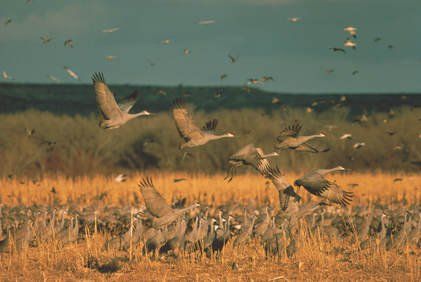
Sandhill Cranes
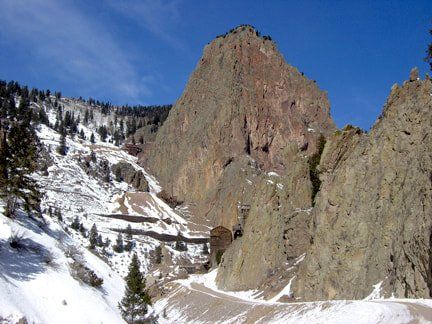
Bachelor Loop
10 – Creede:
Underground Mining Museum; Creede Historical Society and Bachelor's Loop – The boomtown of Creede attracted thousands to silver mines along Willow Creek during the 1890s. The Underground Mining Museum presents this history using real mining equipment and other exhibits. The Creede Historical Society Museum is located within a one-story 1892 train depot. The museum captures the boom days when the D&RG railroad extended its line to Creede to support the mining operation and the approximately 10,000 fortune hunters that quickly followed. Visitors may also explore the Bachelor Loop Tour, a 17-mile backcountry auto tour that leads past impressive mining structures and spectacular mountain scenery.
